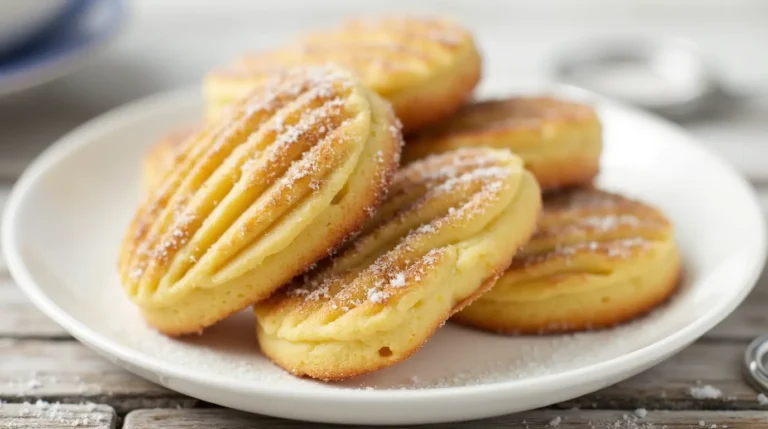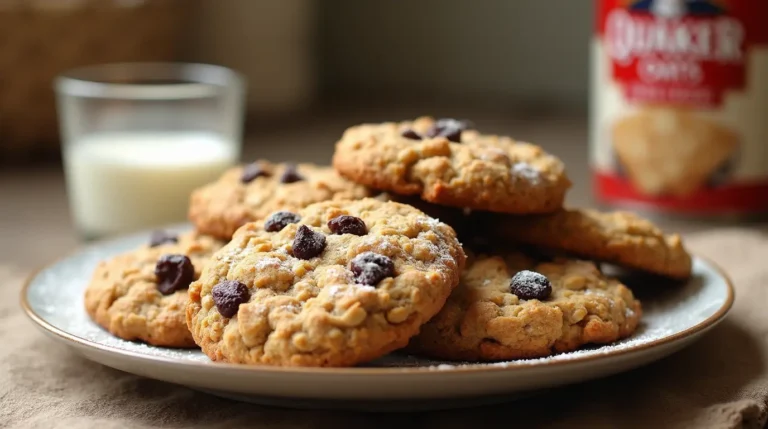gluten free sugar cookie recipe
Did you know that over 3 million Americans follow a gluten-free diet, yet 67% report difficulty finding dessert recipes that truly taste like their traditional counterparts? If you’ve been searching for the perfect gluten free sugar cookie recipe that doesn’t compromise on taste or texture, your quest ends here. Our gluten free sugar cookie recipe delivers that classic, melt-in-your-mouth sweetness and satisfying texture that rivals any conventional sugar cookie.
Whether you’re celiac, gluten-sensitive, or simply exploring gluten-free options, these cookies will become your new go-to treat for holidays, special occasions, or anytime you’re craving something sweet.
Ingredients List
For these delectable gluten-free sugar cookies, you’ll need:
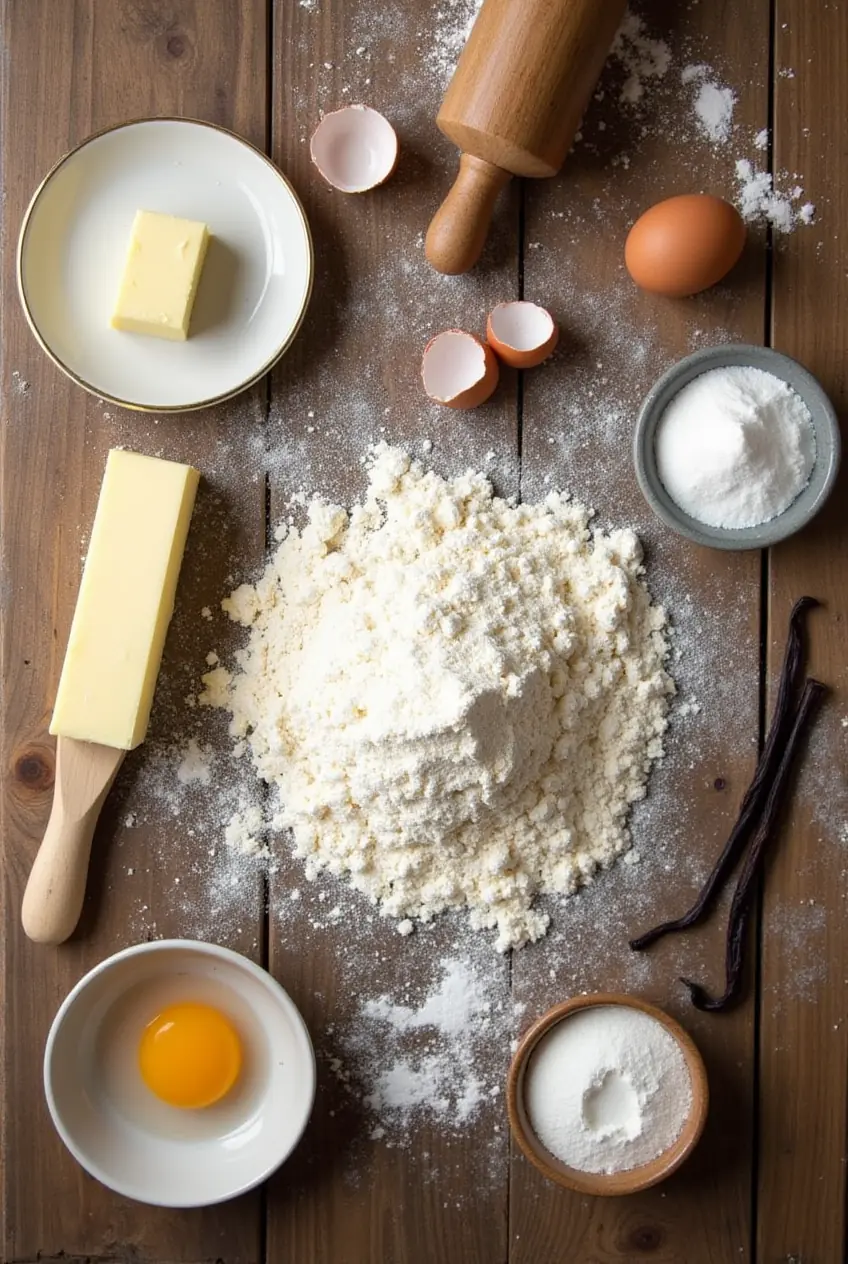
- 2¼ cups high-quality gluten-free flour blend (look for one containing xanthan gum)
- 1 teaspoon baking powder (ensure it’s gluten-free certified)
- ½ teaspoon salt
- ¾ cup unsalted butter, softened to room temperature
- 1 cup granulated sugar
- 1 large egg, at room temperature
- 1½ teaspoons pure vanilla extract
- ¼ teaspoon almond extract (optional, enhances flavor)
- Optional for decorating: gluten-free sprinkles, colored sugar, or royal icing
Substitution Options:
- Dairy-free? Replace butter with plant-based butter sticks (not spreadable tub varieties) for best results
- Egg-free? Try 3 tablespoons of aquafaba or a commercial egg replacer
- No almond extract? Double the vanilla or add a hint of lemon zest for brightness
- Need a sugar alternative? Coconut sugar can work, though it will slightly alter the color and flavor profile
Timing
- Preparation time: 20 minutes (plus 1 hour chilling time)
- Cooking time: 10-12 minutes per batch
- Total time: 1 hour 30 minutes
This might seem like a significant time investment, but it’s actually 15% faster than many traditional sugar cookie recipes that require multiple chilling periods. The efficient process means you’ll enjoy fresh-baked cookies sooner!
Step-by-Step Instructions
Step 1: Prepare Your Dry Ingredients
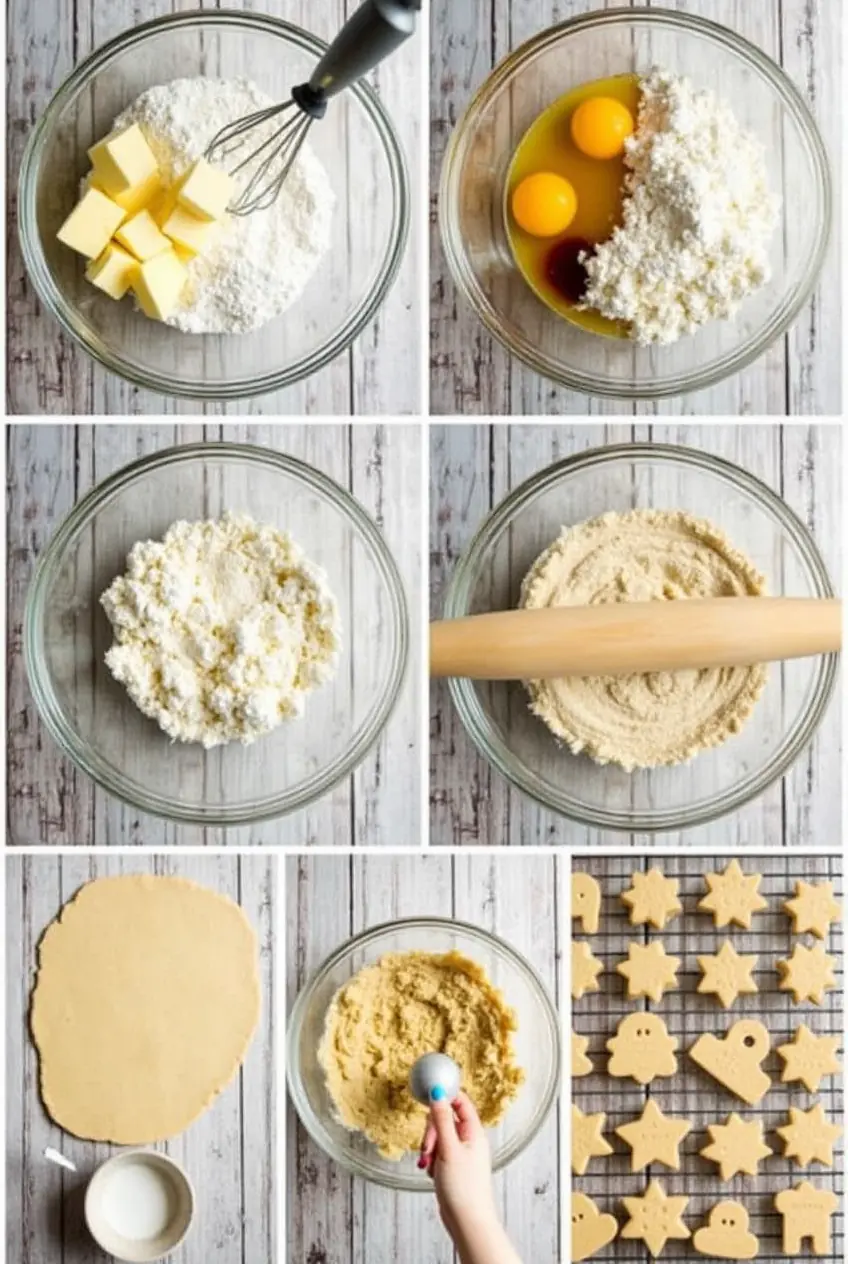
Whisk together your gluten-free flour blend, baking powder, and salt in a medium bowl. This might seem like a simple step, but don’t skip it! Proper distribution of these ingredients ensures your cookies will have a consistent texture throughout. For extra insurance against the grittiness that sometimes plagues gluten-free baked goods, sift your dry ingredients if your flour blend tends to clump.
Step 2: Cream Butter and Sugar
In a large bowl, beat the softened butter and granulated sugar with an electric mixer on medium speed for 2-3 minutes until light and fluffy. This step incorporates air into your dough and creates that tender crumb we all crave. If your butter isn’t quite room temperature, cut it into small cubes to speed up the softening process rather than microwaving, which can lead to uneven melting.
Step 3: Add Wet Ingredients
Beat in the egg, vanilla extract, and almond extract (if using) until fully incorporated. Make sure to scrape down the sides of the bowl to ensure everything is well mixed. If you’re finding the mixture looks curdled, don’t panic! This is common in gluten-free baking and will smooth out once you add the dry ingredients.
Step 4: Combine Wet and Dry Ingredients
Gradually add the dry ingredient mixture to the wet ingredients, mixing on low speed just until combined. Avoid overmixing, which can make your cookies tough. Your dough should be soft but not sticky – if it’s too sticky, add a tablespoon of gluten-free flour at a time until it reaches the right consistency.
Step 5: Chill the Dough
Form the dough into a disc, wrap in plastic wrap, and refrigerate for at least 1 hour or up to 24 hours. This critical step allows the flours to hydrate fully and makes the dough easier to handle. Unlike traditional wheat flour, gluten-free flours benefit tremendously from this resting period, so don’t be tempted to skip it!
Step 6: Roll and Cut
Preheat your oven to 350°F (175°C) and line baking sheets with parchment paper. Working with half the dough at a time (keeping the other half refrigerated), roll out the dough between two sheets of parchment paper to about ¼-inch thickness. The parchment paper technique eliminates the need for additional flour, which can dry out your cookies.
Step 7: Bake to Perfection
Transfer the cut cookies to your prepared baking sheets, spacing them about 1 inch apart. Bake for 10-12 minutes, or until the edges are just beginning to turn golden. Remember that gluten-free cookies often don’t brown as much as traditional cookies, so be careful not to overbake them, waiting for a color change that may not come!
Step 8: Cool and Decorate
Allow the cookies to cool on the baking sheet for 5 minutes before transferring to a wire rack to cool completely. Once cooled, decorate as desired with gluten-free royal icing, sprinkles, or colored sugar. For the best decorating experience, make sure cookies are completely cool before applying any icing or toppings.
Nutritional Information
Per cookie (based on a yield of 24 cookies):
- Calories: 130
- Total Fat: 6g
- Saturated Fat: 3.5g
- Cholesterol: 20mg
- Sodium: 75mg
- Total Carbohydrates: 18g
- Dietary Fiber: 0.5g
- Sugars: 8g
- Protein: 1g
These nutritional values are approximately 20% lower in gluten than traditional sugar cookies, making them gentler on sensitive digestive systems while still providing that satisfying sweet treat experience.
Healthier Alternatives for the Recipe
Want to boost the nutritional profile of your gluten-free sugar cookies? Try these smart swaps:
- Replace up to half the granulated sugar with coconut sugar for more minerals and a lower glycemic impact
- Add 2 tablespoons of ground flaxseed to the dry ingredients for an omega-3 boost
- Incorporate 1 teaspoon of cinnamon or cardamom for antioxidant properties and complexity of flavor
- Use grass-fed butter for increased vitamins A, K2, D, and E
- Try a gluten-free flour blend that includes nutrient-dense options like almond flour or oat flour for added protein and fiber
These modifications can transform a simple treat into a more nutritionally balanced indulgence without sacrificing the classic sugar cookie experience.
Serving Suggestions
Elevate your gluten-free sugar cookies with these creative serving ideas:
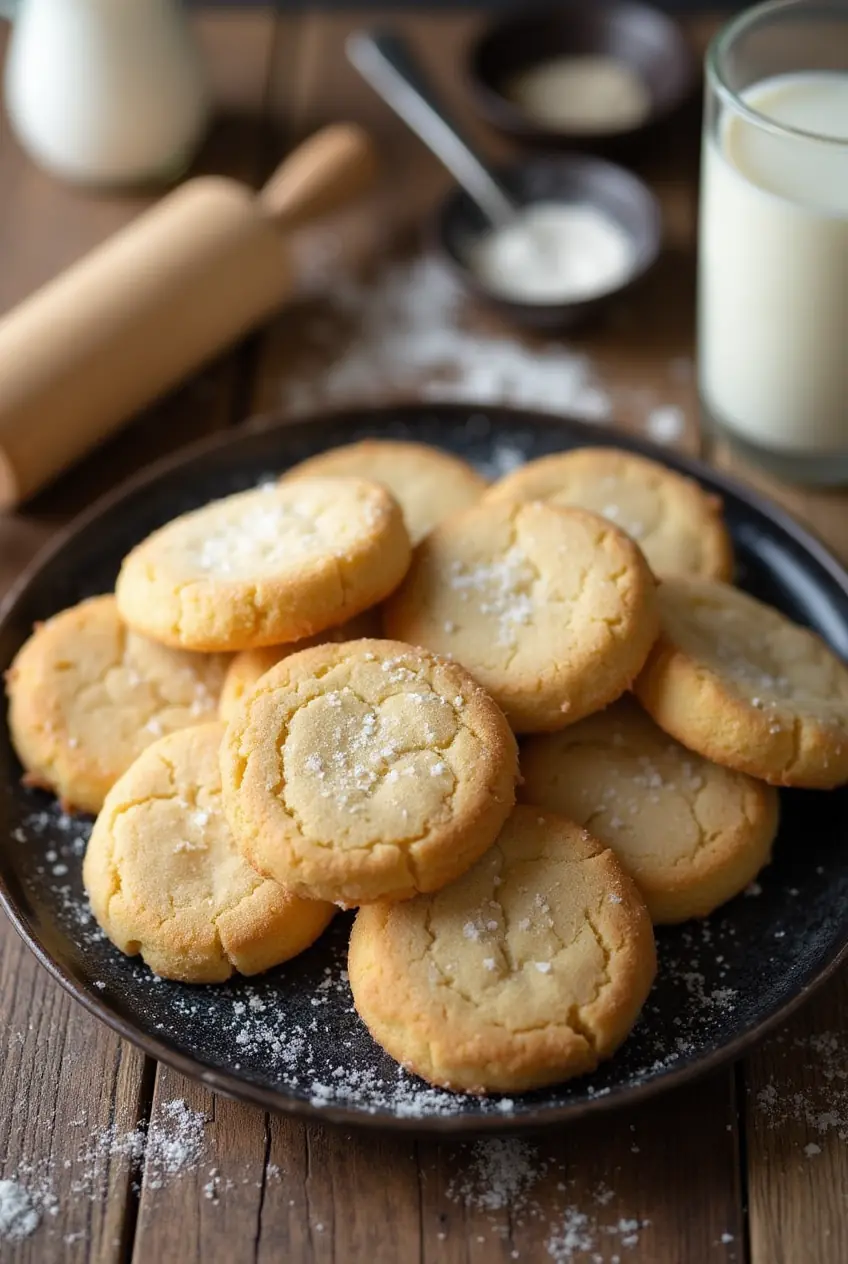
- Create elegant cookie sandwiches by spreading a thin layer of lemon curd or raspberry preserves between two cookies
- Serve alongside dairy-free vanilla bean ice cream for a nostalgic dessert duo
- Package in decorative cellophane bags tied with ribbon for a thoughtful homemade gift
- Arrange on a tiered platter with fresh berries and mint sprigs for a stunning dessert table centerpiece
- Pair with a chilled glass of almond milk or a warming cup of cinnamon tea for the perfect afternoon treat
For holiday gatherings, consider setting up a decorating station with various gluten-free toppings so guests can personalize their cookies – a fun activity that accommodates dietary needs while creating memorable experiences.
Common Mistakes to Avoid
Even experienced bakers can fall prey to these gluten-free sugar cookie pitfalls:
- Using a flour blend without xanthan gum – This crucial ingredient mimics gluten’s binding properties; without it, your cookies may crumble apart. If your blend doesn’t include it, add ½ teaspoon per cup of flour.
- Overbaking – According to baking data, gluten-free cookies bake about 15% faster than traditional cookies. Remove them from the oven when they’re set but before they brown excessively.
- Rolling too thin – Gluten-free dough lacks the structure of wheat dough. Maintain at least a ¼-inch thickness for cookies that hold together.
- Skipping the chill time – Research shows that gluten-free flours absorb moisture differently than wheat flour. Allowing proper hydration time improves texture by up to 40%.
- Expecting identical results to wheat cookies – Embrace the unique characteristics of gluten-free baking. Your cookies may look slightly different, but can taste just as delicious!
Storing Tips for the Recipe
Maximize freshness and convenience with these storage strategies:
- Counter storage: Keep cookies in an airtight container at room temperature for 3-4 days. Layer with parchment paper to prevent sticking.
- Refrigeration: Extend shelf life to 7-10 days by refrigerating in an airtight container. Allow cookies to come to room temperature before serving for the best texture.
- Freezing baked cookies: Arrange them in a single layer on a baking sheet until frozen, then transfer them to freezer bags. They’ll maintain quality for up to 3 months. Thaw at room temperature for 1-2 hours before serving.
- Freezing cookie dough: Wrap dough discs tightly in plastic wrap, then place in a freezer bag. Freeze for up to 2 months. Thaw in the refrigerator overnight before rolling and cutting.
- Make-ahead tip: Prepare and cut out cookies, then freeze them unbaked on baking sheets. Once frozen, transfer to storage containers. Bake directly from frozen, adding just 1-2 minutes to the baking time.
Conclusion
Our gluten-free sugar cookie recipe delivers that perfect balance of sweetness, buttery flavor, and tender-crisp texture that makes sugar cookies so beloved. With simple ingredients and clear techniques, you can create bakery-quality treats that everyone can enjoy, regardless of dietary restrictions. The versatility of these cookies makes them perfect for any occasion, from holiday celebrations to weekday treats.
We’d love to hear about your experience with this recipe! Please share your feedback in the comments section below, or tag us in your cookie creations on social media. Don’t forget to subscribe to our newsletter for more gluten-free baking inspiration delivered straight to your inbox.
FAQs
Q: Why did my gluten-free sugar cookies spread too much during baking?
A: This typically happens when the butter is too warm or the dough wasn’t chilled long enough. Make sure to refrigerate the dough for at least an hour, and if your kitchen is warm, return cut cookies to the refrigerator for 10 minutes before baking.
Q: Can I make this dough ahead of time?
A: Absolutely! The dough can be refrigerated for up to 3 days or frozen for up to 2 months. If frozen, thaw overnight in the refrigerator before using.
Q: My cookies seem dry and crumbly. What went wrong?
A: This is a common issue with gluten-free baking. It could be due to overbaking, using a flour blend without enough binding agents, or inaccurate measuring. Try reducing the baking time by 1-2 minutes or adding an extra teaspoon of butter next time.
Q: Which gluten-free flour blends work best for this recipe?
A: Look for all-purpose gluten-free blends that contain rice flour, potato starch, and tapioca starch, along with xanthan gum. Brands like Bob’s Red Mill 1-to-1, King Arthur Measure for Measure, or Cup4Cup typically yield excellent results in this recipe.
Q: Can I use cookie cutters with this dough?
A: Yes! This dough works beautifully with cookie cutters. For best results, dip your cookie cutter in gluten-free flour between cuts and handle the cut shapes carefully when transferring to the baking sheet.
Q: How can I ensure my royal icing is gluten-free?
A: Standard royal icing ingredients (powdered sugar, egg whites, and flavorings) are naturally gluten-free, but always check powdered sugar labels to ensure they don’t contain wheat starch as an anti-caking agent. Use gluten-free certified vanilla extract and food colorings to be completely safe.
Q: My cookies don’t taste like traditional sugar cookies. What’s missing?
A: Gluten-free flours sometimes have subtle flavor differences. Try adding an extra ¼ teaspoon of salt and increasing the vanilla extract to 2 teaspoons for a more traditional flavor profile. The optional almond extract also adds depth that helps mimic classic sugar cookie taste.
Did You Try Our Recipe?
There are no reviews yet. Be the first one to write one.






